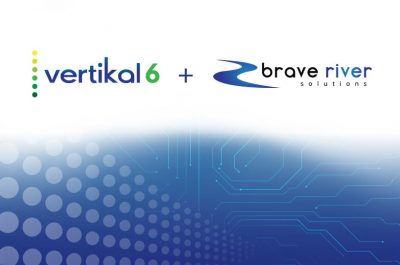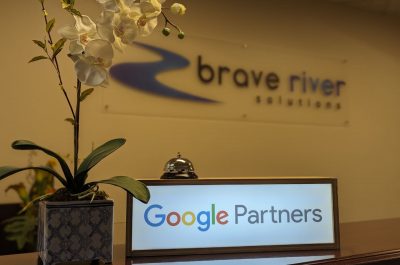Welcome to SEO 101, I’ll be your guide today through the marvelous world of Search Engine Optimization! Today, we will be taking an in-depth look at the many components and practices that make up SEO. This pocket guide will provide you with the SEO essentials that you need to enhance your website and rise in the rankings on Google. And don’t you worry, this guide has been crafted to deliver information about SEO that is easy, understandable, and fun!
So, what is SEO anyway?
SEO is the process and practice of making your website more [understandable and visible] to search engines to increase [the quality and quantity] of your traffic.
Well, what does that mean?
To start off, I’ll explain why I call it a “process” and “practice.”
- Process: There are many functions of SEO that you can utilize, however, it takes time to figure out which techniques are out there and how to work it into your website.
- Practice: SEO isn’t a one-time deal. You must work at it and maintain it for your website to continue to perform well.
What is a search engine bot?
Search engines utilize something called a “bot,” which are sent out to look through (or “crawl”) your webpages. Bots are responsible for figuring out things such as
- What is the topic of your site?
- What do you offer?
- Business information
- Is your website simple to understand and navigate through?
- How well does it work on mobile devices?
- And many more…
Let’s pretend a bot is crawling your website right now, you wouldn’t want to make your website difficult for him to understand! He just wants to help your site become recognized online and expand its visibility to potential viewers that you haven’t been able to reach yet. (We will talk about how to do this later)
Why utilize SEO?
Increasing your sites visibility online should in turn increase your readers, leads, and/or revenue. Who wouldn’t want that? Try to think of it like this:
GREAT OPTIMIZATION ➔ HIGHER RANK ➔ MORE VISIBILITY ➔ MORE TRAFFIC = MORE CONVERSIONS
I know, it may be overwhelming, but put simply, SEO is designed to help potential visitors easily find your website or ecommerce site.
With practice and research, you can implement SEO methodology yourself! In addition to this guide or the from folks at Brave River Solutions, there is an entire realm of free (yes, free) applications and resources that are available to assist you. Taking advantage of each SEO resource and tool will set push website above your competitors on search engines like Google.
Success Factors of SEO
The science behind SEO is not as complex as it may seem. The Periodic Table of Success Factors organizes the best SEO practices to implement in order rank your website higher. This table also shows negative factors so that you can prepare and be aware of what could hurt your rank.
We will be breaking down the elements of:
- On-Page-SEO factors are what can be done within your site by you. This includes anything that involves the overall structure or html of your site, as well as the content you publish.
- Off -Page-SEO factors are what can be done outside the realm of your website to demonstrate that your site has authority, relevance, and trustworthiness. Adding your business information with your website url to social media channels, directories, maps, and other reputable websites.
On-Page SEO Factors and Practices
Section 1: Content
This section covers the main ways to enhance content and increase search engine optimization your website.
- Quality—Making sure that the content you are publishing is high quality, and valuable to your viewers. You should use resources and data to backup information that you are sharing. You will also want to check for grammar and spelling mistakes.
- Research—Research your topic and competitor websites to see how their content is structured. If you have higher quality and more information you will rank higher than them after time.
- Words— Researching keywords that you can potentially include in your content so it can relate to and be found more easily by viewers. Use terms throughout your content that people would to use to find your site. Another easy way to implement is to use synonyms the topic throughout the text.
- Fresh—Writing about engaging or popular topics that your target audience would be interested in reading. This means writing trending topics that are presently popular as well as “evergreen” content that will still be relevant years from now.
- Vertical—Providing viewers content on all relevant search engine channels:
- Images – be sure to include alternative text to each image of your topic
- Maps & Local – enter your business information on Bing / Google Maps and Google My Business
- News – Be sure to include your articles / posts on news outlets like Google News if you’re a publication company
- Shopping – Use Shopping verticals like Google Shopping to advertise your products on search engines.
Section 2: HTML
This section covers the main points of HTML, or coding, and how you can further develop the codes and structure of your site for a more visually attractive and easy user-experience.
- Titles—Including keywords that pertain to the content of your webpage in the title tags.
- Description—Providing clear explanations in the meta description tags of your content.
- Headers—Using header tags such as H1, H2, and H3 (which are basically just a hierarchy of headers outlined to enhance readability and for the convenience of the viewer).
- Structured Data—Adding additional data, such as reviews, rich snippets, and schema to make your search engine listing more attractive to viewers.
Section 3: Architecture
This section expresses how to adapt your site so that bots and users can easily navigated throughout its pages.
- Crawl—Insuring that your site is easily crawlable by bots. If your content is clearly arranged and able to be found by a human, there is a high likelihood it can be found by a bot. Overall, make sure there is a simple way to find every page you create on your site.
- Duplicate—Do not plagiarize or duplicate content from other website or other pages on your site. This will demote your rankings.
- Speed—Having a speedy site will boost your ranking (no one likes browsing slow pages). You can use a website speed test tool to make sure your webpages load faster than 3 seconds on mobile devices.
- URLs—Having URLs that clearly describe the topic of the webpage.
Example: https://www.example.com/mens-clothing/tshirts - Mobile—Having a web design that translates well to mobile devices will boost your ranking.
Off-Page SEO Factors and Practices
Section 1: Links
- Quality—Links to your website suggested by credible sources (in other words, links from other websites let Google know that your website is a great source for what they are writing about).
- Topic—The topic of the external webpage linking to your site should match the content that you have on your site. External links are great for giving readers an option to read more information on a topic or to share a resource that was used. This shows Google that you are an authority on the subject.
- Number—This refers to the number of times other sites are linking you. The more quality sites link to your site the better your chances are of ranking higher on search engines.
Section 2: Trust
- Authority—Your website will be recognized as an authority based on the type of reviews and quality links coming from external websites.
- History—The longer you have an optimized website with great content the more trust Google will give you, potentially increasing your rankings over younger websites.
Section 3: Social
- Reputation—Social Media channels are search engines too. If you optimize your social media posts your will be seen more and as each channel will see you as a reputable source. If your posts send readers to your website it could potentially increase traffic and leads on your site.
- Shares—Shares don’t have a direct correclation with SEO but the more people share your content, the more of a change of people visiting your website.
Section 4: Personalization
- Country—Google considers which countries your content is relevant for. If you feel that your content is relevant outside of the United States, working on your international SEO is the next step.
- Locality—Google also considers which specific areas (towns, cities, states) your content is relevant for. All search results are personalized to each users location.
- Personal History—Users who frequent your site will see your website rank higher compared to something who has never been to your website.
Negative Factors and Practices
This section explains practices that could potentially harm your ability to rank on search engines, maintain good repour, or even keep your business running.
- Thin—If your content is too “thin” or doesn’t have enough content suitable for the viewer.
- Ads—If your content is surrounded by an overwhelming amount of advertisements that distracts or blocks the viewer from seeing your content.
- Stuffing—Google can now tell if you use the same keywords too many times on a page. This is also called over-optimization and is seen as a cheating SEO tactic.
- Hidden—Don’t try to add keywords or text as the same color as the background or hidden in any other way.
- Cloaking—If you are deliberating rigging your site so that the bots see content other than what it is actually there so you can get more viewers (people also call this bait and switch)
- Paid—Paying for links to be published on other sites (this is bad, because your ranking would be skewed for the wrong reasons).
- Spam—Spamming blog-postss/forums/etc. with your website to get more viewers. This is not only annoying to people, but wrong because you are artificially adding external links.
- Piracy—If you are producing copywritten or pirated content, you will be flagged by search engines for doing so. This could not only demote your rankings but remove your from search engines completely.
What now?
And just like that, you’ve learned the basics of SEO. You can now move forward in further developing your website based on the previous components we explored throughout this guide. You’re well on your way to increasing viewership and visibility of your website.
If you find that you need a little extra help, we’re always here for you and your digital marketing needs. Contact the #1 rated SEO Company in Rhode Island by calling 401-828-6611 today.




